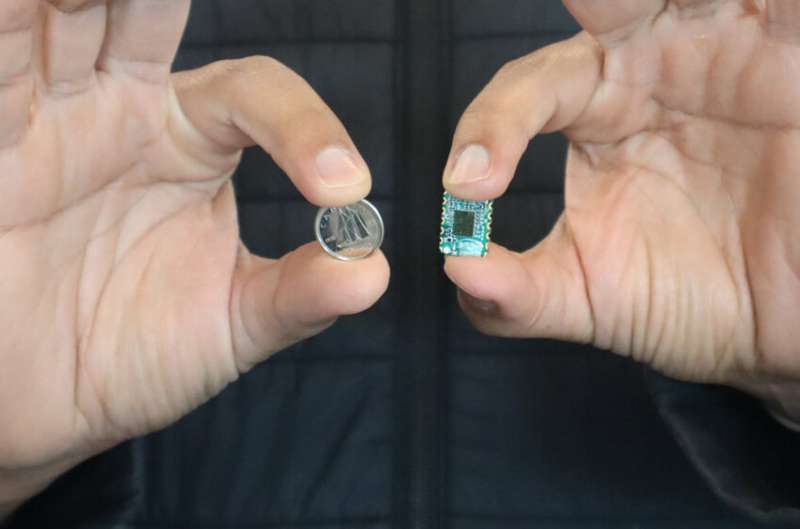This article has been reviewed according to Science X's editorial process and policies. Editors have highlighted the following attributes while ensuring the content's credibility:
fact-checked
peer-reviewed publication
trusted source
proofread
Researchers use radar technology to monitor the health status of a driver

Inspired by the medical bay of the USS Enterprise from "Star Trek," a research team from the University of Waterloo uses radar technology to monitor people's health while at the wheel, turning an ordinary car or truck into a mobile medical hub. The research paper, "Multibin Breathing Pattern Estimation by Radar Fusion for Enhanced Driver Monitoring," was published in IEEE Transactions on Instrumentation and Measurement.
Dr. George Shaker, an adjunct professor in the Department of Electrical and Computer Engineering at the University of Waterloo, is working with a team of graduate students to integrate radar with evolving vehicle technology to make health checks easier. The idea is to use the time people spend in their cars to gather data on their health for accurate analysis and proactive treatment—without the need for any type of wearable.
The radar, smaller than a USB thumb drive, is integrated into the vehicle cabin and sends out signals that detect human vibrations, which are then sent back to the radar. The built-in AI system collects and analyzes the data to build a medical picture and identify any potential conditions. At the end of the driver's commute, the system sends the report directly to their cell phone for review.
"This radar technology is not new," Shaker said. "Our first demos using radars for in-cabin sensing were developed back in 2017 for infotainment touchless control and to alert people to children and pets left alone in parked vehicles. This application, using the technology to monitor vehicle occupants' health, is a step towards achieving our vision of cars as medical hubs of the future."
The technology, which is the latest from Waterloo aimed at disrupting the boundaries of health, can detect tiny movements like the rise and fall of a chest from breathing or heartbeats.
For Shaker and his team, the challenge was evolving the tech to identify changes in breathing patterns or heart rhythms that signify potential health issues related to cardiovascular conditions like tachycardia and bradycardia as well as respiratory system conditions like tachypnea, bradypnea and apnea.
"We focused on enhancing data extraction for exact information related to people's respiratory and cardiovascular systems and teaching the AI how to make medical interpretations from this data. Another important consideration was personal privacy and security—no data is stored on the cloud; it is sent to the monitored person's cellphone only," said Ali Gharamohammadi, the lead Ph.D. student on the project.
A series of tests using synthetic data, i.e. subjects mimicked respiratory conditions' symptoms by holding their breath and taking shallow breaths, validated the system's capability for accurately detecting and interpreting respiratory conditions. The system has also been tested on individuals with heart conditions which it successfully detected and accurately identified.
The research team is building on this work to expand the radar technology's capabilities to monitor all vehicle occupants' overall health and well-being, run diagnostics and generate quality medical reports that flag any issues that need attention, as well as assist with emergency communication in the event of an accident.
More information: Ali Gharamohammadi et al, Multibin Breathing Pattern Estimation by Radar Fusion for Enhanced Driver Monitoring, IEEE Transactions on Instrumentation and Measurement (2023). DOI: 10.1109/TIM.2023.3345909


















